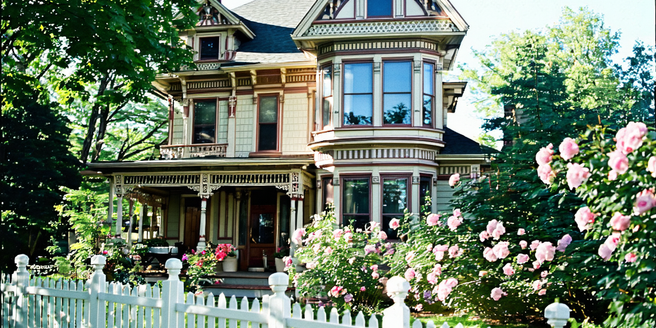Discovering Bargains In Historical Housing Markets

The Allure of Historical Homes
The timeless appeal of historical homes lies in their unique architectural features and the sense of history they embody. Properties from past eras often boast intricate woodwork, vintage fixtures, and a distinct charm that modern homes may lack. For potential buyers, the allure extends beyond aesthetics, offering a tangible connection to the cultural and societal context of the time they were built. Moreover, residing in a historical home can offer a sense of prestige and a tie to heritage. Enthusiasts value the character and craftsmanship of these homes, appreciating their storied past while preserving them for future generations. As interest in historical residences increases, many prospective buyers are drawn to their distinct style and historic significance.
Understanding Market Trends Through the Years
Understanding the evolution of market trends is crucial for prospective buyers in the historical housing sector. Tracking the rise and fall of property values over the decades provides insights into which areas have appreciated or depreciated in value, highlighting factors like economic growth, urban development, and demographic shifts. By analyzing past patterns, investors can forecast future market behavior, allowing them to make informed decisions. Historical data also reveals the resilience of certain neighborhoods during market downturns, offering a gauge of long-term investment potential. As investors and homebuyers delve into these trends, they can recognize shifts in consumer preferences and policy impacts, shaping a strategic approach to purchasing historical properties.
Identifying Hidden Gems in Old Neighborhoods
Old neighborhoods are often treasure troves of potential for those with a keen eye for detail. Identifying hidden gems requires a mix of research and intuition, as many of these properties may not initially stand out. Elements such as unique architectural details, a rich backstory, or proximity to revitalized areas can elevate the appeal of an otherwise overlooked property. With urban renewal efforts gaining traction, older neighborhoods are witnessing a renaissance, making them desirable locations for investment. Recognizing these opportunities involves understanding local development plans, historical significance, and community sentiment. Enthusiasts who can pinpoint these gems stand to benefit from both the character and potential appreciation of these vibrant locales.
Evaluating the True Value of Vintage Properties
Assessing the true value of vintage properties extends beyond standard real estate metrics. These properties demand a nuanced appraisal that considers historical significance, architectural integrity, and preservation status. Unlike modern constructions, vintage homes may possess unique features that require customized maintenance and upgrades, which should be factored into the valuation process. Experts recommend enlisting the help of specialists who understand the complexities of vintage properties, from historical restoration professionals to property appraisers with experience in older homes. A thorough evaluation of condition, from foundation to roof, is essential, ensuring no hidden costly repairs await. The genuine value often lies in the property’s potential for restoration and the premium placed on unique, period-specific details.
Negotiating Deals in Tight Markets
Navigating negotiations in competitive markets requires skill and strategy, especially with desirable historical properties. In a tight market, understanding the seller’s motivations and the demand for similar properties can give buyers a crucial edge. Building rapport with sellers can uncover what terms might be more significant than the price, such as closing timelines or contingencies. Buyers should be prepared to act swiftly, with pre-approval and a clear vision of their offer terms. Additionally, crafting a persuasive offer letter that highlights appreciation for the property’s history can resonate with sellers, especially those emotionally invested in their homes. Conducting thorough research on comparable sales aids in formulating competitive offers, ensuring that buyers present fair and informed proposals.
Preserving Charm While Maximizing Investment
Investing in historical homes presents a unique challenge: maintaining the property’s charm while ensuring it serves as a sound financial investment. Key to this balance is thoughtful restoration that respects the original design while integrating modern conveniences. Updating essential systems like plumbing and electrical without disrupting architectural aesthetics is crucial. Owners should also be aware of potential tax benefits associated with historical property preservation. Aligning with local preservation societies can provide guidance on how to undertake renovations that enhance property value while retaining historical integrity. Strategic improvements, such as energy-efficient upgrades discreetly installed, can further allure potential future buyers seeking a blend of tradition and modernity. Balancing charm with practicality ensures these historic treasures remain vibrant and valuable investments.